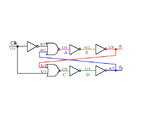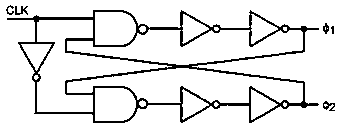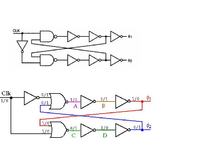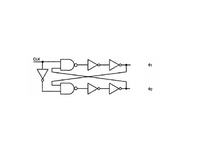andrea22
Junior Member level 2
Does anyone know how it works non-overlapping clock generator?
The circuit takes a clock signal and generates a two-phase nonoverlapping clock.
The amount of the separation is set by the delay trough the NAND gate and two inverters on the NAND output.
My question is:Why these clock signal must me non-overlapped?
How each logic gate (NAND and inverters) effects that those signals are non-overlapped?
How can non-overlapping time increase?
The circuit takes a clock signal and generates a two-phase nonoverlapping clock.
The amount of the separation is set by the delay trough the NAND gate and two inverters on the NAND output.
My question is:Why these clock signal must me non-overlapped?
How each logic gate (NAND and inverters) effects that those signals are non-overlapped?
How can non-overlapping time increase?





